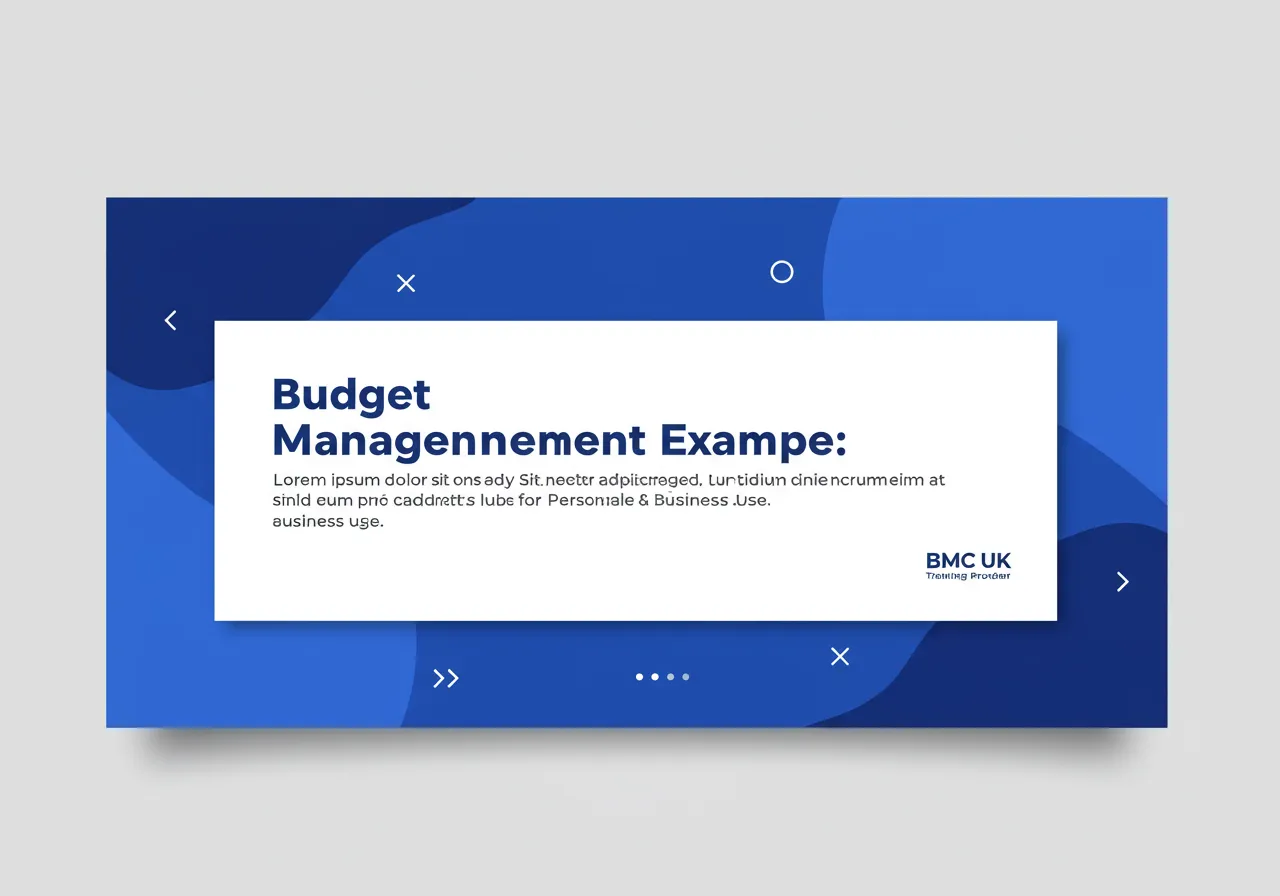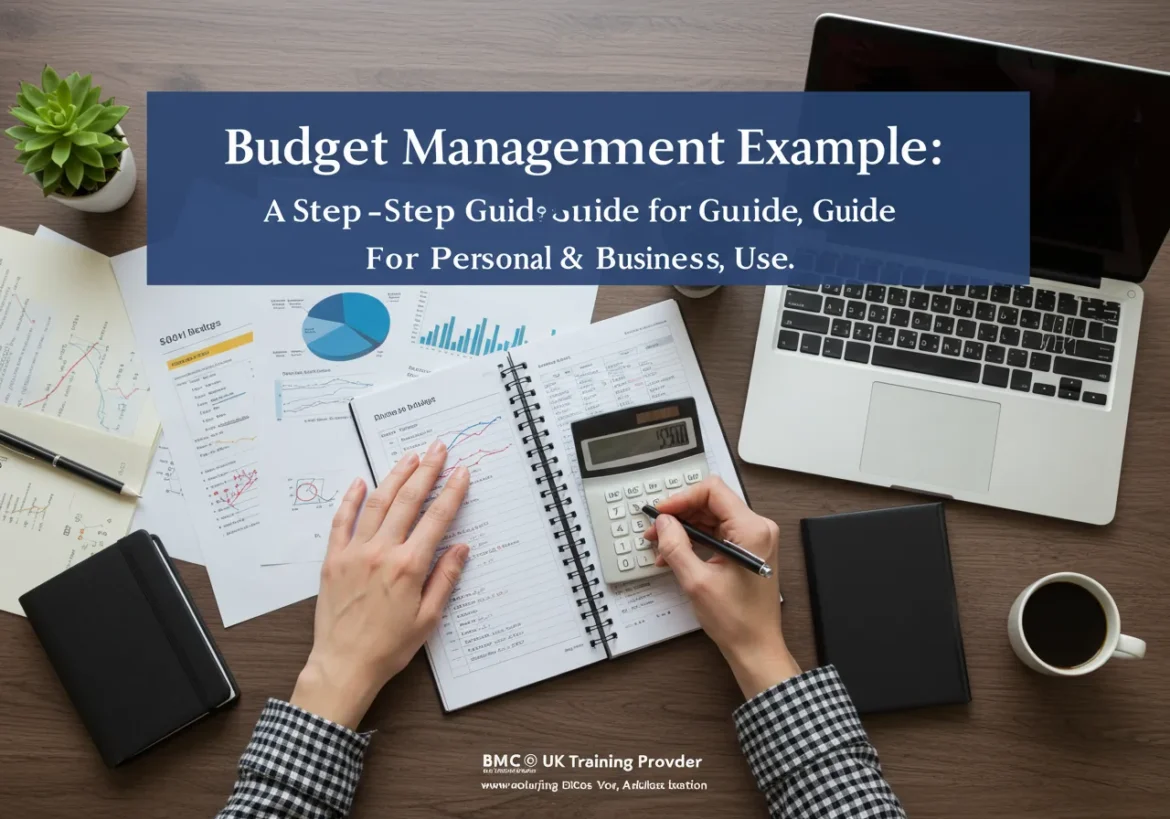Are you tired of feeling stressed about money? Do you want to take control of your finances, whether for your household or your business? Budget management isn’t just about cutting costs; it’s about making informed, strategic decisions that lead to financial freedom and growth. This guide will walk you through a practical, step-by-step budget management example, empowering you with the tools and knowledge to build a solid financial future.
What is Budget Management, and Why is it Essential?
Before we dive into the “how,” let’s clarify the basics. Understanding the core concepts makes the process more effective.
Defining Budget Management
Budget management is the process of creating a financial plan and then tracking your income and expenses to ensure you stay within that plan. It’s an active, ongoing practice—not a one-time task. It involves:
- Setting clear financial goals.
- Allocating money to different categories.
- Regularly monitoring your spending.
- Making adjustments as needed.
The “Why”: Benefits of Effective Budgeting
Why go through all this effort? The rewards are significant:
- Reduces Financial Stress: Knowing where your money is going brings peace of mind and reduces anxiety.
- Achieves Financial Goals: Whether you’re saving for a down payment, a vacation, or a new business investment, a budget is your roadmap.
- Identifies Wasteful Spending: A budget reveals “leaks” in your finances, allowing you to reallocate funds to more important areas.
- Empowers Decision-Making: With a clear picture of your finances, you can make confident choices about purchases and investments.
- Prepares for the Unexpected: A well-managed budget includes an emergency fund, providing a safety net for unforeseen events.

A Practical Budget Management Example: The Step-by-Step Process
Here is a practical, step-by-step example you can follow for both personal and business finances.
Step 1: Track Your Income and Expenses
The first and most critical step is to understand your current financial reality. You can’t plan for the future without knowing your present.
- For Personal Use:
- Income: Tally all sources of monthly income (salary, freelance work, side hustles, etc.).
- Expenses: Go through bank statements, credit card bills, and receipts for the last 3-6 months. List everything: rent/mortgage, groceries, utilities, transportation, dining out, subscriptions, etc.
- For Business Use:
- Income: Total all revenue streams (sales, service fees, subscriptions, etc.).
- Expenses: Review all operational costs: rent, payroll, marketing, software, supplies, utilities, and loan payments.
Step 2: Categorize Your Spending
Once you have your data, group similar expenses together. This makes it easier to see spending patterns and identify areas for adjustment.
- Fixed Expenses: Costs that remain the same each month (e.g., rent, insurance, loan payments).
- Variable Expenses: Costs that fluctuate (e.g., groceries, entertainment, utilities).
- Discretionary Expenses: Non-essential spending (e.g., dining out, shopping, hobbies).
Step 3: Create Your Budget
Now, you will use the data from Steps 1 and 2 to create a formal budget. The goal is to ensure your total expenses do not exceed your total income.
Personal Budget Breakdown Example
Business Budget Breakdown Example
Step 4: Monitor and Adjust Your Budget
A budget is a living document. You must review it regularly (weekly or bi-weekly) to compare your actual spending against your budgeted amounts. If you overspend in one category, you may need to reduce spending in another. This continuous feedback loop is the core of effective budget management.
Read Also : Budget Management in Management and Leadership
Personal vs. Business Budgeting: Key Differences and Similarities
While the core principles are the same, the context and goals differ.
Tips and Best Practices for Successful Budget Management
- The 50/30/20 Rule (Personal): A simple guideline where you allocate 50% of your income to needs, 30% to wants, and 20% to savings and debt repayment.
- Zero-Based Budgeting: Every dollar of income is assigned a job (to an expense or savings). Your income minus your expenses should equal zero.
- Involve Your Partner/Team: For both personal and business finances, transparency and communication are key. Make budgeting a collaborative effort.
- Automate Where Possible: Automate savings transfers and bill payments to ensure you consistently meet your goals without thinking about it.

Frequently Asked Questions (FAQs) about Budget Management
Q: How often should I review my budget?
A: A weekly or bi-weekly review is ideal to catch overspending early. A more comprehensive review and adjustment should be done monthly.
Q: What’s the best budgeting app?
A: There is no single “best” app. Options like YNAB (You Need A Budget), Mint, and Personal Capital are popular choices, each with different features. Choose one that fits your needs and is easy for you to use.
Q: Can I create a budget if my income is irregular?
A: Absolutely. If your income varies (e.g., a freelancer), the key is to base your budget on a conservative estimate of your monthly income. You can then use the extra funds from higher-income months to build a buffer or an emergency fund.
Q: What if I can’t stick to my budget?
A: Don’t get discouraged. A budget is a tool, not a punishment. If you’re consistently overspending in a category, it might mean your budgeted amount isn’t realistic. Review your spending and make an honest adjustment.
Ready to take control of your finances? The most important step is to start. Download our free budget template and begin your journey to financial clarity today.
About BMC Training
At BMC Training, we are experts in answering “what is bespoke corporate training” by delivering precisely that: highly customized, impactful learning experiences designed to meet your organization’s unique needs. With over 12 years of expertise, we are a globally recognized provider of professional development programs, specializing in creating tailored training solutions that drive tangible business results. Our approach is deeply collaborative, ensuring every program is perfectly aligned with your strategic objectives, cultural nuances, and specific challenges.
BMC’s comprehensive services include:
- In-house and customized corporate training: This is our core strength, where we meticulously design programs to be delivered on-site at your premises, at a location of your choice, or virtually for your teams across the globe. Our London office in the UK (2 Kingdom Street, Paddington, W2 6BD) serves as a key hub for our European operations.
- Public training programs: For individual professionals or smaller groups looking for internationally benchmarked courses in major global cities, including London, Dubai, New York, and many others.
- Consulting services for comprehensive organizational development.
- Research-based leadership development and post-training action plans to ensure knowledge application and sustained growth.
Our extensive portfolio covers key training categories such as
Finance, Accounting & Budgeting, Project,
Safety & Facilities Engineering
Human Resources & Communication.
We pride ourselves on offering practical, actionable training with measurable outcomes, maintaining global consistency while offering regional relevance.
Trusted by international organizations for leadership development and corporate upskilling, BMC Training is your partner in achieving strategic talent goals through tailored learning journeys.
Ready to unlock your organization’s full potential with training designed exclusively for you?
Contact BMC Training today to discuss your bespoke corporate training needs and discover how a customized program can drive your business forward.
UK Office (London): 2 Kingdom Street, Paddington, London, W2 6BD Phone Numbers: +44 7776 267062 | +44 7493 377144 Email: [email protected]


